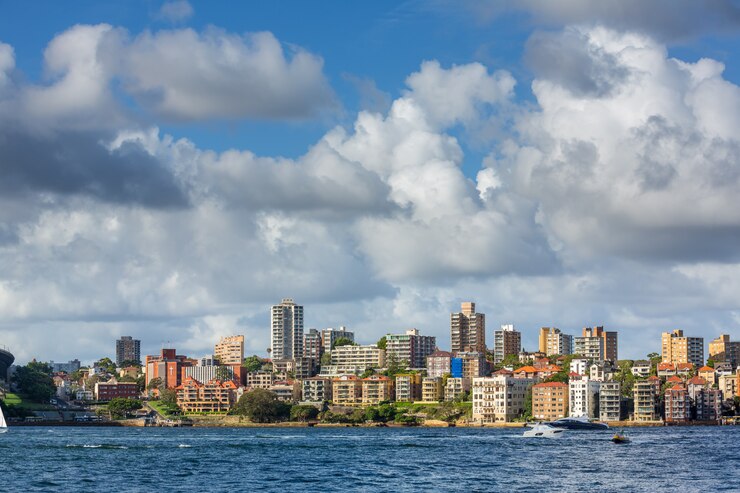Exercising outdoors is one beautiful way of keeping fit and enjoying the beauty of New South Wales. However, NSW weather can be so inclement sometimes that it could drastically affect your outdoor exercise routine. No matter whether you are an elite athlete or only an ordinary fitness enthusiast, knowing how to cope with various weather conditions is important for keeping up an effective and safe training program. The impact of NSW weather on fitness and a few helpful tips for keeping fit all year round will be discussed in the all-inclusive guide.

Understanding NSW Weather
Weather refers to an area or season that varies from place to place and season to season. Knowing the general trend of the weather in any locality helps one plan their workouts accordingly.
Overview of NSW Climate Zones
Included above are the broad climatic zones of NSW, separated by quite varied weather patterns:
- Coastal Regions: Temperature, with humidity, the coastal regions are mild. In such areas, winters are very mild, while summers are warm and humid.
- Inland areas: Such places have extremes of temperature. The summer season is very hot, while the winter season can be cold.
- Highlands: High-altitude areas are cold during the year, and there are heavy snowfalls during the winter months.
Seasonal Weather Variations in NSW
The NSW Weather varies greatly over the seasons, and each variation affects your outdoor fitness schedule in different ways.
- Summer: Hot and often humid; the temperature can rise as high as more than 30°C.
- Autumn: More pleasant due to the mild temperatures and less humidity.
- Winter: Cold inland and highland, often below 10°C.
- Spring: Weather warms up; temperatures around the middle and flowers bloom; occasional rainfall normally occurs in this period.
Impact of NSW Weather on Outdoor Fitness
In such varied weather conditions, one can find both advantages and disadvantages in one’s feelings about physical performance and general fitness.
Effects of Heat and Humidity
Such exercises are quite hard to execute since they interfere with the proper cooling of the body, raising the risks of related sicknesses like dehydration and heat-related illnesses. On the bright side, however, training in this condition not only improves cardio-fitness but also the efficiency of the sweat rate.
Cold and Wind
This can make your muscles cold and tight, which again raises the potential for injury. On the other hand, wind can add additional air resistance to your workout, making it more challenging. Be a little more mindful of your warm-up, and add an extra layer of protection from the wind.
Rain and Thunderstorms
Rain will make everything slithy and amplify the chances of falling.
Thunderstorms are very dangerous due to the possibility of lightning. Light rain, however, could be sorts of refreshing and lovely to change the routine.
UV Radiation Levels
High UV levels, especially in summer, may cause sunburn and increase the risk of skin cancer. Protect yourself—slap on sunscreen, and protective clothing, and prefer exercising during the early morning or late evening hours.
Strategies for Adapting to NSW Weather
To be able to work out outdoors regularly in a regime, it is grossly important to adjust your workouts according to the weather outside.
Tips for Exercising in Hot Weather
- Hydrate: Make sure to have yourself well hydrated before, during, and after you exercise. Take into account hydration replenishment in case of extended periods of exercise.
- Timing: Try to do exercises where it is coolest earliest in the morning and latest in the evening.
- Clothing: Lightweight, light, loose, and moisture-wicking fabrics will help you stay cool.
- Heat Illness Awareness: Be aware of the signs and symptoms of heat exhaustion and heat stroke, including dizziness, confusion, and heavy sweating. If you experience these symptoms, stop immediately and seek medical attention.
Tips for Exercising in Cold Weather
- Layering: Wear loose, light-coloured clothing in layers that can be removed as you warm up. Begin with a wicking base layer and put an insulating layer over this with one on top with outside wind and water resistance.
- Warm-up and cool-down: Ease down slowly to prevent a sudden change in temperature on the muscles.
- Injuries from the cold: Watch out for frostbite and hypothermia symptoms, such as numbness and shivering. Wear gloves, hats, and thermal socks to keep warm.
Tips for Exercising in Wet Weather
- Gear Waterproof: Invest in a waterproof, breathable jacket and pants, plus shoes that will keep one dry and comfortable.
- Suitable Locations: Areas that would be suitable for this include smooth and well-gravelled tracks, avoiding mud and slippier areas as much as possible to avoid a bad fall.
- Lightning Safety: Do not exercise if there is lightning. If the weather is bad and you need to head indoors, do so. If you get Trapped by bad weather seek shelter immediately
Seasonal Workout Plans for NSW Weather
Season-wise routine: Get the best of NSW weather by customizing your workout based on the seasons.
Summer Fitness Routine
- Best Exercises: Swimming, Running early morning or late evening; cycling, and Beach exercises.
- Designed Workout Schedule: Stay hydrated, cool down, and adjust the intensity depending on temperature and humidity.
Autumn Fitness Routine
- Recommended Activities: Hiking, trail running, outdoor strength training, moderate-intensity cardio.
- Designed Workout Schedule: Take advantage of mild temperatures to move out of your comfort zone in terms of workout intensity and duration.
Winter Fitness Routine
- Recommended Activities: Run, Strength train, get in some winter sports if they are available in your region, or high-intensity interval training.
- Designed Workout Schedule: Focus on a correct warm-up and layering. Consider shorter and more intense workouts to keep you hot.
Spring Fitness Routine
- Ideal Activities: Running, cycling, yoga, pilates, outdoor sports
- Suggested Workout Schedule: Gradually increase workout intensity as temperatures go higher, and the nature of HIVES
Importance of Weather Forecasting
Weather forecasts can be utilized to maximize planning an outdoor workout effectively.
Utilizing Weather Forecasts
- Reliable Sources: Use reputable weather forecasting sources or your trust in weather apps.
- Weather Apps and Alerts: Set up weather alerts, which will let you know in case of any big change; thus, you can change plans accordingly.
Indoor Alternatives for Extreme NSW Weather
When the NSW Weather is harsh and doesn’t let you exercise outdoors, think of indoor substituents that will ensure the continuity of your fitness regime.
Benefits of Indoor Workouts
That way, indoor workouts will be carried out in a controlled climate. You’re less likely to get hurt due to bad weather, and your routines will be more consistent.
Popular Indoor Fitness Options
- Gyms and centres: Make use of the equipment and classes to gain maximum workout.
- Home setup: Company yourself with just a few basics like dumbbells, resistance bands, and a yoga mat.
- Virtual classes: Stay motivated and inspired by participating in virtual classes.
Maintaining Consistency
Keep it dynamic, and alternate between indoor and outdoor workouts so that you don’t get bored. Indoor options are great on days when the weather is extreme, and outdoor workouts can be emphasized when the weather is perfect.
Safety Considerations and Precautions
Safety during an outdoor workout, whatever the weather may look like.
General Safety Tips
- Hydrate and fuel: Complement your workout with a balanced diet by eating food and keeping yourself well-hydrated.
- Personal Safety and Security: Exercise in well-populated areas, let someone know where you’ll be and when, and keep identification and a phone on your person.
Specific Precautions for Different Weather Conditions
- Preventing Heatstroke and Sunburn: Apply sunscreen, wear a hat, and rest in the shade.
- Hypothermia and Frostbite Prevention: Properly dress for weather conditions, minimize exposure, and avoid becoming wet.
- Slip and Fall Prevention in Wet Conditions: Stay on stable surfaces, wear appropriate footwear, and avoid hazardous areas.
Conclusion
The NSW weather can mean challenges but also opportunities for outdoor fitness enthusiasts. Informed by how different weather conditions can affect one’s routine, one will be able to enjoy a dynamic program of fitness throughout the year. Be informed. Be safe. Admire the beauty and variability of NSW weather as you work toward your fitness goals.
Additional Resources
- Useful websites and apps: Bureau of Meteorology, WeatherZone, MyFitnessPal, Strava.
- Further Reading: “The Outdoor Athlete” by Courtenay Schurman, “Training in Extreme Environments” by Yves C. Vanlandewijck.
- Local Fitness Experts and Weather Services: Many fitness centres, trainers, and community groups in your area are well placed to provide more specific advice and support locally.
By following these guidelines and using the previous strategies, you will be better equipped to modify your outdoor fitness regime around the vagaries of the NSW weather. Be active, be prepared, and enjoy the journey to better health and fitness.











